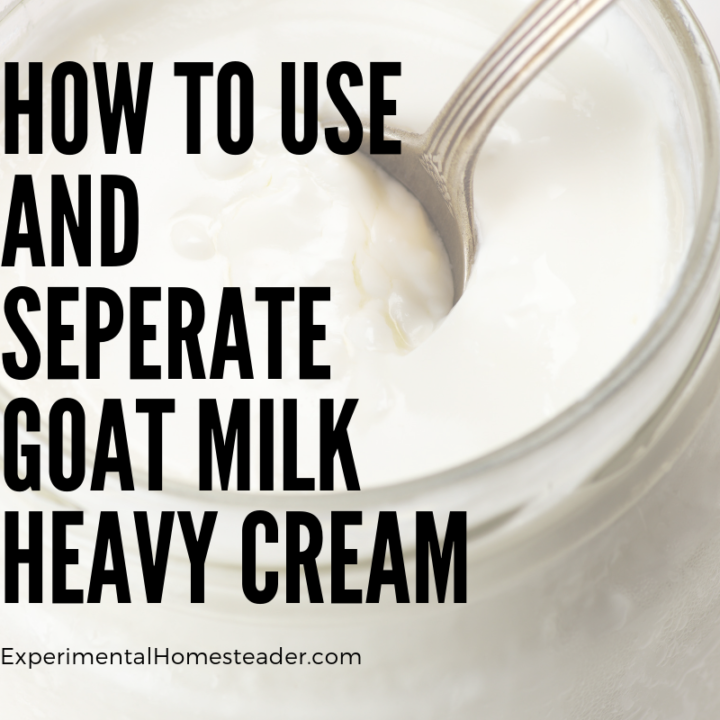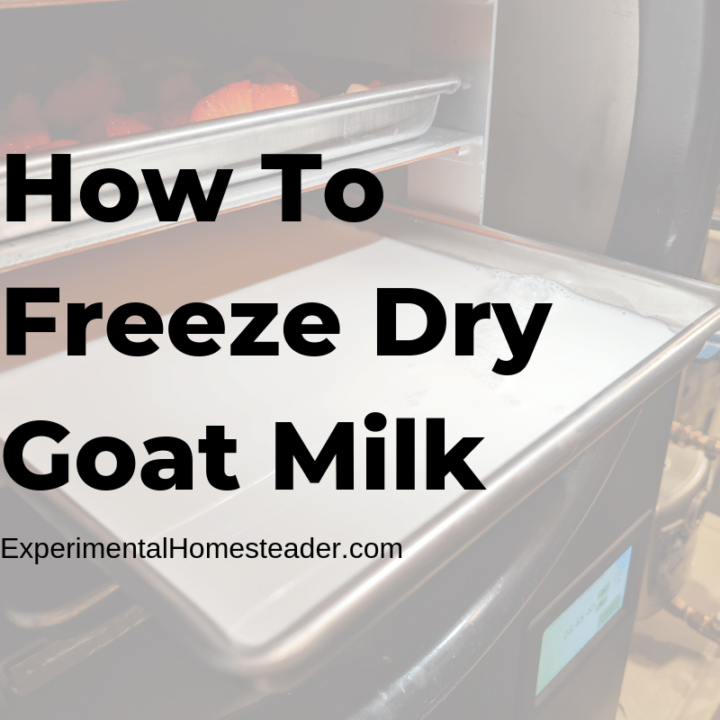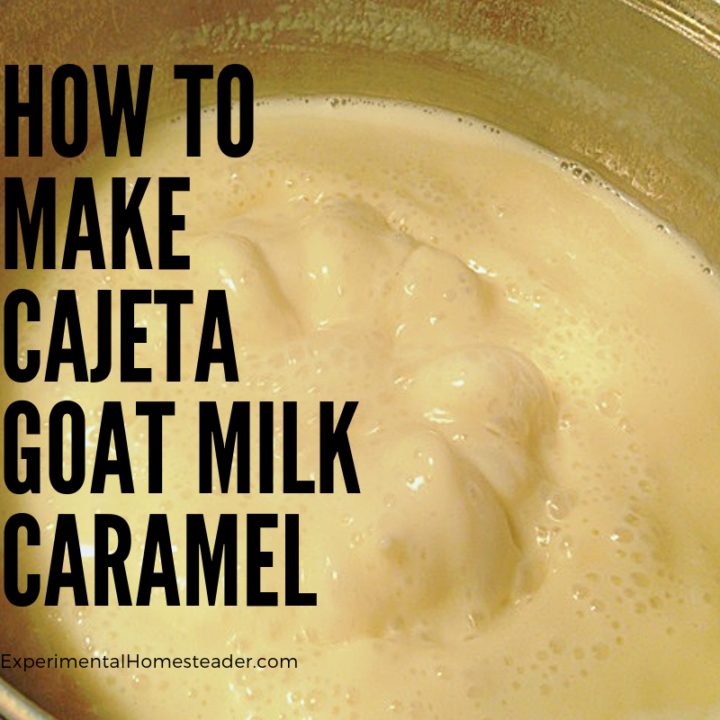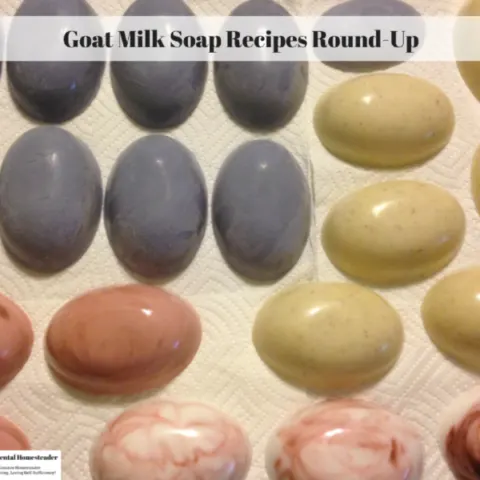Deciding how to pasteurize goat milk at home depends in part on what type of equipment you already have as well as what type of investment you are willing to make.
There are many ways to get the job done such as using an electric milk pasteurizer machine, using a double boiler on top of your stove or even pasteurizing it in an Instant Pot.
An electric milk pasteurizer machine costs quite a bit more than the other options, but it is convienent.
If you opt to use the double boiler and do not have one, it is fairly simple to add water to the larger pot, add milk to the smaller pot and then sit the smaller pot in the larger pot that you added water too.
Just be sure that you did not add so much water that the water boils over the top of the pan the milk is in as the pasteurization process is taking place.
Another option is use your Instant Pot to pasteurize the milk provided the Instant Pot you chose has that option because not all of them do.
How To Pasteurize Goat Milk At Home Using An Electric Pasteurizer Machine
An electric milk pasteurizer machine, which is my choice, works great because other than put the milk into it and cool the milk down after the machine is done, you simply wait for the timer to go off.
I started off with a used one from the 1950's that someone had stored in their attic.
The price was right and it worked, however eventually the buzzer quit working, so while the electric pasteurizer machine still brought the milk up to temperature and kept it there for the right amount of time, there was no buzzer to let me know it was done, so I had to keep a close eye on it.
Newer electric pasteurizer machines are quite pricey and to date I have not bought a new one.
However, if you are like me, super busy when milking season is going on, it might be worth the investment.
Be sure to consider how much goat milk you are going to need to pasteurize at one time and look at the features of the electric pasteurizer machine carefully.
Buy the biggest size you think you are going to need as this is a serious small kitchen appliance investment.
I don't know how other electric pasteurizer machines work, as I have only had the one style, but I can tell you how mine worked.
There was a stainless steel inner cooking pot that was removable so it was easy to wash and fill with strained raw goat milk.
I simply strained the milk to remove any debris in the milk such as goat hair or grass, etc. and then poured the milk into the inner cooking pot.
Then I set the inner cooking pot into the pasteurizer which pressed a button downward on the bottom of the pasteurizer.
From there, I put the lid on the inner cooking pot, plugged the electric pasteurizer machine in, turned the dial all the way to one side and waited for the buzzer to sound.
Once the buzzer went off, the milk was pasteurized and the only thing left to do with cool the milk quickly and then either put it in the refrigerator or freeze the goat milk for future use.
How To Pasteurize Goat Milk At Home On The Stove
An alternative method that many people use to pasteurize goat milk at home is to do it on the stove.
I have seen people do it on low heat using a canning pot, but the best way is to use a double boiler so there is no chance that the milk will burn.
To pasteurize goat milk on top of your stove, slowly heat the milk while stirring it frequently until it reaches 165 degrees Fahrenheit.
Keep the milk at that temperature for 15 seconds and then remove the milk from the heat.
For those who prefer a lighter pasteurization, another method involves heating the milk to 145 degrees Fahrenheit and keeping it at that temperature for 30 seconds.
The choice is yours, but I can tell you the electric pasteurization machine I had heated the milk to 165 degrees Fahrenheit.
Proceed to cool the milk by filling pint canning jars no more than halfway full of milk and putting them in ice cold water for 15 minutes, then in the freezer for 15 minutes or if you have the room, simply place the canning jars in the freezer for 30 minutes.
Once the goat milk is cooled, move it to the refrigerator or pour it into a large canning jar and freeze it for future use.
How To Pasteurize Goat Milk At Home In An Instant Pot
For those who have a newer Instant Pot such as the IP-DUO Plus 60 or the Instant Pot Ultra, it is possible to use it to pasteurize goat milk at home.
There are two ways to do this, the inner cooking pot method and the canning jar method.
Here is how to do it using the inner cooking pot.
- Add the strained raw milk to the inner cooking pot.
- Put the lid on and make sure it is secure.
- Select the yogurt button.
- Select the adjust button.
- Select the more button.
- After the Instant Pot beeps and displays "yogt," end the program.
For those who prefer to put the milk in canning jars instead of in the inner cooking pot, here is how to pasteurize goat milk with an Instant Pot.
- Add a cup of water to the inner pot.
- Place the steaming rack inside the inner pot.
- Place the canning jars on top of the steaming rack.
- Select the steam function and set it for one minute.
- Allow the steam to release naturally.
With either method, it is important to bring the pasteurized milk down to 40 degrees Fahrenheit within a 30 minute time frame, which is the same process as pasteurizing milk any other way.
Goat Milk And Goat Meat
Recipes, DIY and more! All related to goat milk and goat meat.
Goat Milk Butter Recipe
Making butter from goats milk is super easy and all you need is a kitchen blender! This goat milk butter recipe only takes a few minutes to make!
How Long Does Pasteurized Goat Milk Last
Have you ever wondered how long does pasteurized goat milk last? Find out the the answers for both refrigeratored and frozen goat milk!
How To Use And Separate Goat Milk Heavy Cream
Learn how to use and separate goat milk heavy cream even if you do not have a cream separator. Heavy cream is used in a lot of recipes and can be frozen.
Goat Milk Storage Ideas
Are you looking for goat milk storage ideas? Then read on to learn the best practices for handling goat milk plus short and long term storage methods.
How To Start Freezing Goat Milk
Freezing goat milk is the best way to preserve it. Learn how long frozen goat milk lasts in the freezer, how long it lasts in the refrigerator and more!
How To Make Cajeta Goat Milk Caramel
Learn how easy it is to make cajeta goat milk caramel from fresh goat milk. Plus learn how to preserve it for winter use by canning it.
Easy Homemade Parmesan Cheese Recipe
Follow these easy step by step instructions to learn how to make this easy homemade parmesan cheese recipe right in your own kitchen!
How to Make Goat Milk Cottage Cheese on Your Homestead
Learn how to easily make delicious cottage cheese using goat milk on your homestead. A step-by-step guide for beginners!
Freezing Goats Meat
Freezing goats meat is as easy as freezing any other type of meat. If you raise goats or have a goat meat store close by this is an easy way to stock up.
Goat Milk Soap Recipes Round-Up
Are you looking for goat milk soap recipes? Look no further! Here you find a goat milk soap recipe for liquid soap, bar soap and even laundry soap.




















Tracy
Wednesday 2nd of February 2022
you stated "For those who prefer a lighter pasteurization, another method involves heating the milk to 145 degrees Fahrenheit and keeping it at that temperature for 30 seconds." This should be 30 minutes!
Sheri Ann Richerson
Wednesday 2nd of February 2022
@Tracy, that would remove all of the nutrients which is why store bought milk has the nutrients added back in. There is no need at all to pasturize milk for 30 minutes. Besides getting my information from multiple sources, I actually timed how long multiple automatic pasteurizers hold the temperature once it reaches the correct temperature. It is 30 seconds, not 30 minutes. We do not use VAT Pasteurization. We use HTST. Here is a link with more information - https://www.idfa.org/news-views/media-kits/milk/pasteurization